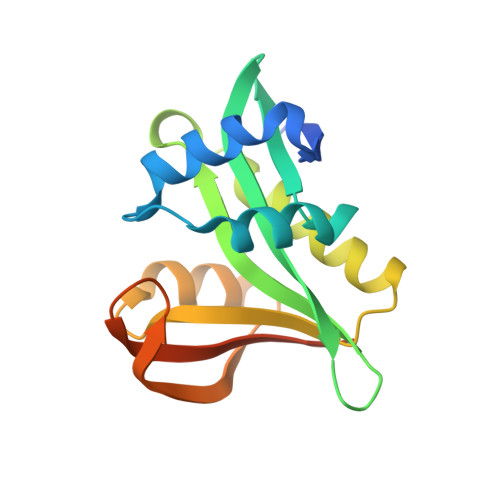Structural and functional characterization of the N-terminal acetyltransferase Naa50.
Weidenhausen, J., Kopp, J., Armbruster, L., Wirtz, M., Lapouge, K., Sinning, I.(2021) Structure 29: 413
- PubMed: 33400917
- DOI: https://doi.org/10.1016/j.str.2020.12.004
- Primary Citation of Related Structures:
6YZZ, 6Z00 - PubMed Abstract:
The majority of eukaryotic proteins is modified by N-terminal acetylation, which plays a fundamental role in protein homeostasis, localization, and complex formation. N-terminal acetyltransferases (NATs) mainly act co-translationally on newly synthesized proteins at the ribosomal tunnel exit. NatA is the major NAT consisting of Naa10 catalytic and Naa15 auxiliary subunits, and with Naa50 forms the NatE complex. Naa50 has recently been identified in Arabidopsis thaliana and is important for plant development and stress response regulation. Here, we determined high-resolution X-ray crystal structures of AtNaa50 in complex with AcCoA and a bisubstrate analog. We characterized its substrate specificity, determined its enzymatic parameters, and identified functionally important residues. Even though Naa50 is conserved among species, we highlight differences between Arabidopsis and yeast, where Naa50 is catalytically inactive but binds CoA conjugates. Our study provides insights into Naa50 conservation, species-specific adaptations, and serves as a basis for further studies of NATs in plants.
Organizational Affiliation:
Heidelberg University Biochemistry Center, 69120 Heidelberg, Germany.















